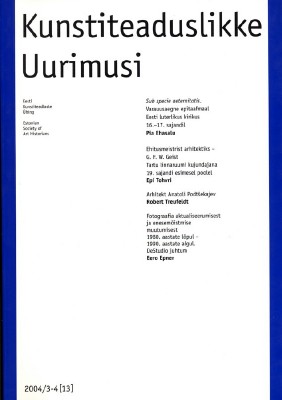Ehitusmeistrist arhitektiks – G. F. W. Geist Tartu linnaruumi kujundajana 19. sajandi esimesel poolel
From master builder to architect – G. F. W. Geist as designer of Tartu urban space in the first half of the 19th century
Author(s): Epi TohvriSubject(s): Fine Arts / Performing Arts
Published by: Eesti Kunstiteadlaste Ühing
Keywords: 19th century architecture; Estonian architecture; Livonian architecture; Baltic architecture; Tartu; G. F. W. Geist
Summary/Abstract: The general classicist look of Tartu mainly developed during the first half of the 19th century. Besides the university complex designed by architect J. W. Krause, numerous public buildings and private houses appeared. The architectural solutions of the latter followed the standard projects created in the early 19th century. Considering the European context, this was an extensive undertaking – an attempt of the Russian tsarist empire to realise European architectural ideas.According to the regulations of the Livonian regional government two positions of a master builder, financed from state treasury, were created in Tartu. They were supposed to realise the ideas of enlightenment architecture. In 1814, carpenter G. F. W. Geist and mason J. N. F. Lange were appointed to take up the posts. The current article focuses on the activities of George Friedrich Wilhelm Geist as the master builder of Tartu between 1814 and 1846.
Journal: Kunstiteaduslikke Uurimusi
- Issue Year: 13/2004
- Issue No: 03+04
- Page Range: 50-77
- Page Count: 28
- Language: Estonian
- Content File-PDF

